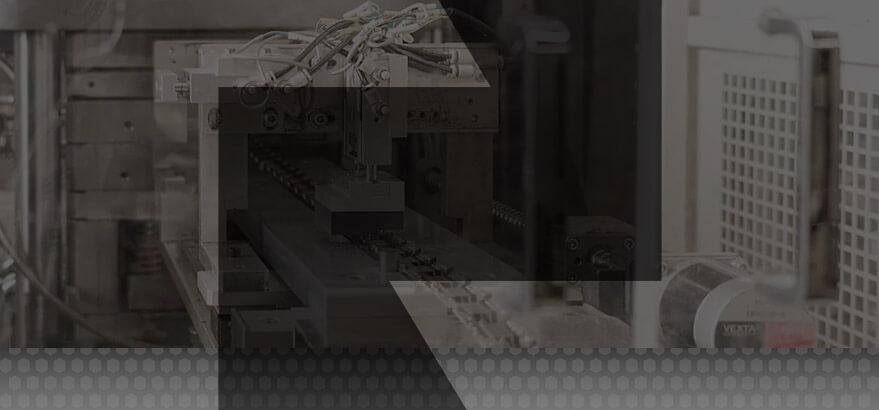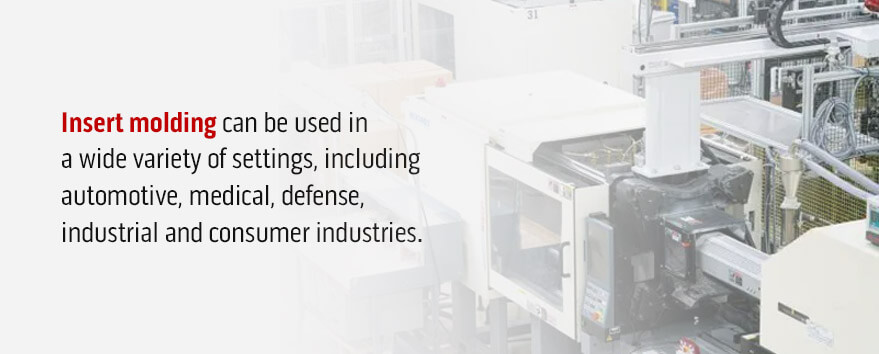

Insert molding is an integral manufacturing process used in several industries. It combines plastic injection molding with precast plastic, metal or other materials to form a single mold. This insert molding design guide will explore the concept in depth to cover the process, its benefits and its applications.
New Concept Technology has comprehensive insert molding solutions for your custom project. Trust us to help you meet your project objectives from start to completion.
If you’re looking to blend the strength of metal with the lightweight and flexibility of plastics, insert molding might be the answer. Insert molding is a versatile, single-step process that accommodates various metals and plastics for products, from household toothbrushes to military aircraft. Parts range from simple to complex, and this process can often help you achieve unique designs with fast turnarounds and valuable physical characteristics.
We’ll examine plastic insert molding in more detail, including the materials used, the process and how it compares to other molding methods.
Insert molding is injection molding used to bond plastic and nonplastic materials. The nonplastic insert is encapsulated by plastic. The insert is usually made of brass, steel, or stainless steel but can also be made of plastic, ceramic, or another suitable material.
Molten plastic is injected into a mold, and the insert is placed inside. Once the plastic cures, the completed part is released from the mold. The plastic and nonplastic parts now have an exceptionally strong bond, helping eliminate or minimize the need for soldering, adhesives or fasteners.
Insert molding is used in simple and complex applications due to its versatility. Explore how insert molding can benefit your business:
While traditional injection molding provides numerous benefits such as cost efficiency and versatility, exploring the advantages of insert molding can reveal additional opportunities for innovation in product design and manufacturing.

IInsert molding can be used in various settings, including automotive, medical, defense, industrial and consumer industries. It can create a strong seal and mechanical support for various applications. Insert molding is commonly used to surround a threaded insert or encapsulate electrical components.
Some other insert molding examples include:
These are just a few examples — plastic insert molding can be used for a wide range of parts, including extremely complex and precise pieces.
Insert molding uses the same process as general injection molding but with one additional step. To simplify this, we’ve presented the process in a few steps:
The result is a single piece combining metal and plastic into one tightly bonded part with several unique characteristics to support its application.
Insert molding is often used interchangeably with overmolding since both methods refer to types of injection molding. The two are similar but with a distinct difference:
At New Concept Technology, insert molding isn’t just a process — it’s part of a vertically integrated solution. We design, tool, and produce insert molded parts in-house, giving you unmatched control over cost, quality, and speed.
If insert molding sounds like the right option for your next project, or you’re not sure what you need, the experts at New Concept Technology can help. We offer a wide range of insert molding manufacturing services in our state-of-the-art facility, along with expert design, automation and assembly services.
With several leading certifications and a team devoted to innovation, our insert molding services meet the needs of diverse businesses, including those in demanding industries like medical, aerospace and military production. We offer true precision tolerance of ±0.002″ and have experience with many different resin types.
Whether you know exactly what you need or still need some direction, our knowledgeable team can help you find the right molding solution for your application. Contact us today for a free engineering evaluation or to learn more about working with New Concept Technology and whether insert molding suits your application.
To learn more about our diverse manufacturing capabilities, including advanced processes like injection molding and insert molding, visit our capabilities page.